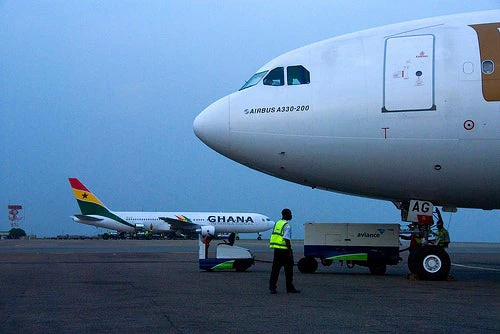
This is one of the questions we sought to answer in developing a new trade costs database, which is a joint project between the World Bank and the United Nations Economic and Social Commission for Asia and the Pacific (UNESCAP). In constructing the database, we were initially motivated by a need to provide understandable estimates of trade costs to clients in North Africa. But the database has broader reach: being able to measure and explain the intensity of trade is of practical importance for many countries and for many aspects of our work at the Bank.
The database uses a new method for measuring trade costs that is more precise than previous calculations and can be used to create profiles of individual countries. It covers the agriculture and manufacturing sectors in 178 countries and shows that it is often more difficult for poor countries to trade with each other – even if they are neighbors – than it is for them to trade with distant countries that are wealthy. It also reveals that between 1995 and 2010, developing countries made slower progress in reducing trade costs than rich countries. With this new resource, we hope to help policymakers pinpoint areas where trade costs are high and diminish the barriers that make trade expensive.
The calculation of “trade costs” is a measurement of the trade-depressing effect of separation between countries. That separation comes in two forms. One is basically immutable, such as distance – the farther countries are from one another, the more expensive transportation is between them and the more difficulty they will have exchanging information – or the lack of a common language. The other form of separation is a more abstract idea and can be conceived of as the “thickness” of borders between countries. It is made up of elements that are easier to control with policy changes, such as logistics performance, international connectivity (existence of a shipping or airline “hub”), tariffs or non-tariff measures.
Our goal was to show where trade costs are high (between which countries), so policymakers could better pinpoint the problems. The approach we took, which is described more in detail in a Policy Research Working Paper and an Economic Premise published by the World Bank, differs from the gravity model, a commonly-used econometric method that uses proxies for factors such as geographic distance and other sources of trade costs. Using some recent ideas in the literature, including our own work on connectivity metrics for global networks, we turned the problem on its head. Rather than using empirical methods to estimate how much trade is reduced compared to its potential, we used an “inverse gravity” method that infers trade costs from observed patterns of trade and production across countries. It follows this reasoning: When a country sells relatively more of its production to foreigners than to residents, it must be because international trade costs have fallen relative to domestic trade costs, and vice versa. The database we compiled includes not only bilateral trade data, which is available through the World Bank’s World Integrated Trade Solution (WITS) server, but information about domestic production. This approach provides a direct and theoretically consistent decomposition of bilateral trade flows based on three factors: two measuring the attraction of each country and a third measuring the “impedance” or hindrance of trade between the two countries.
We found that the two most important factors determining “thickness of borders” trade costs are maritime transport connectivity and logistics performance. Poorer countries tend to have higher levels of trade costs than do richer countries, in both manufactured and agricultural goods. For manufacturing, trade costs have fallen fastest in high-income countries and considerably more slowly in the lower-income groups. In agriculture, by contrast, trade costs have remained relatively flat across income-groups.
The trade costs database provides users with a direct reading of patterns between countries or in a region and allows leaders to compare country performance. It can show which regional trade agreements are working to make trade easier and which are not. It can also indicate where costs are high and likely to be affected by policy measures. Used along with other tools, such as trade facilitation and trade policy assessments, the database can help draw a powerful picture of the flaws that need mending in the international trade network.




Join the Conversation